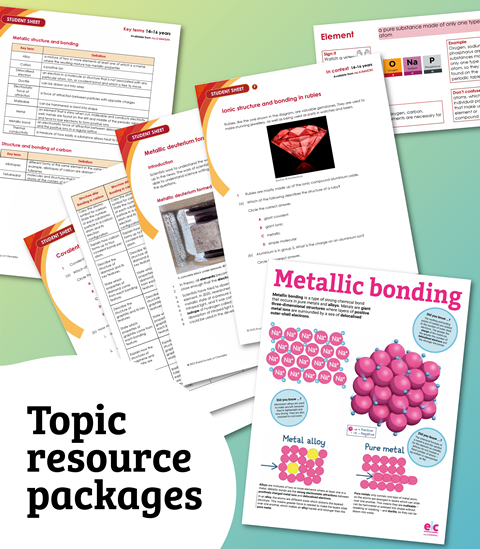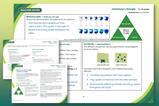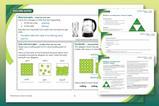Use Johnstone’s triangle to introduce learners to the particle model to describe the properties of solids, liquids and gases
Substances can exist in the solid, liquid or gas state. Each state has specific properties that determine how it behaves.
-

Download this
Use this student worksheet to introduce the particle model at three different conceptual levels based on learners’ observations of water in the solid, liquid and gas state.
View and download more Johnstone's triangle worksheets
Learning objectives
- Recall the three states of matter.
- Compare the properties of solids, liquids and gases.
- Use the particle model to explain why different states of matter have different properties.
How to use Johnstone’s triangle
Use Johnstone’s triangle to develop learners’ thinking about scientific concepts at three different conceptual levels:
- Macroscopic: what we can see. Think about the properties that we can observe, measure and record.
- Sub-microscopic: smaller than we can see. Think about the particle or atomic level.
- Symbolic: representations. Think about how we represent chemical ideas, including symbols and diagrams.
For learners to gain a deeper awareness of a topic, they need to understand it at all three levels.
When introducing a topic, do not try to introduce all of the levels of thinking at once. This will overload working memory. Instead, complete the triangle over a series of lessons, beginning with the macroscopic level and introducing other levels, in turn, once secure.
All of the levels are interrelated; for example, learners need visual representation of the sub-microscopic in order to develop mental models of the particle or atomic level.
Teacher demonstration
Use this demonstration of the three states of matter to encourage learners to observe and describe the shape and compressibility of substances in different states.
Equipment for teacher
- Beaker of water
- Ice cube
- Boiling kettle
- Three syringes filled with plasticine or sand (solid state), water (liquid state) and air (gas state)
Method
- Show learners the three examples of water in different states and discuss the shape of each (fixed for the solid state, non-fixed for liquid and gas state).
- Demonstrate the compressibility of each state of matter using the syringes filled with different substances (only the gas can be compressed).
Further reading
Read more about how to use Johnstone’s triangle in your teaching with these articles:
- Develop deeper understanding with models
- Improve students’ understanding with Johnstone’s triangle
- Practical ideas for using Johnstone’s triangle
Norman Reid’s book The Johnstone Triangle: The Key to Understanding Chemistry provides a more in-depth overview, the first chapter is available to read online.
Scaffolding
It is important to share the structure of the triangle with learners prior to use. Tell them why you want them to use the triangle and how it will help them to develop their understanding. Use an ‘I try, we try, you try’ approach when you are introducing Johnstone’s triangle for the first time.
Next steps
To further develop learners’ thinking in all areas of Johnstone’s triangle, try our Developing understanding of states of matter worksheet. This includes icons in the margin referring to the conceptual level of thinking needed to answer the question.
Downloads
States of matter Johnstone's triangle student worksheet
Handout | PDF, Size 0.23 mbStates of matter Johnstone's triangle teacher guidance
Handout | PDF, Size 0.35 mbStates of matter Johnstone's triangle student worksheet
Editable handout | Word, Size 0.92 mbStates of matter Johnstone's triangle teacher guidance
Editable handout | Word, Size 1.2 mb























No comments yet